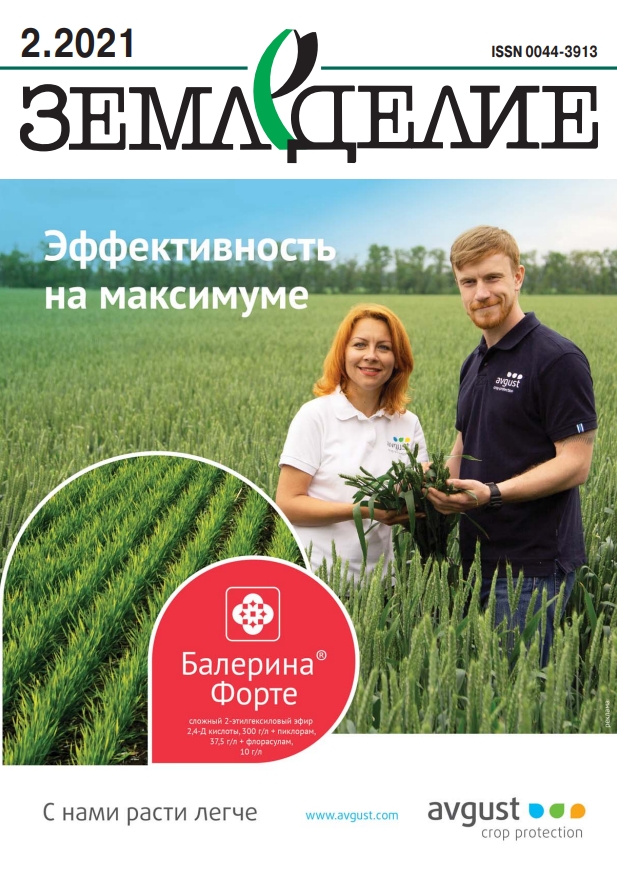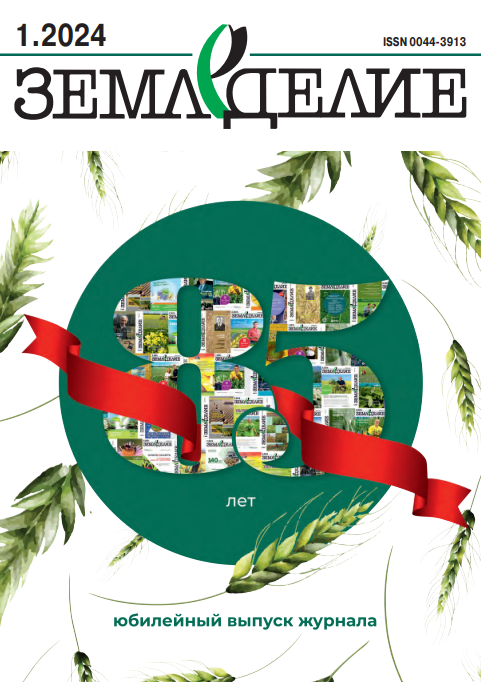Продуктивность зерносвекловичного севооборота при краткосрочном и длительном применении удобрений в ЦЧР
doi: 10.24411/0044-3913-2021-10204
УДК 631.8 : 631.582 : 633.63 : 633.1
О. А. МИНАКОВА, доктор сельскохозяйственных наук, зав. лабораторий (e-mail: Адрес электронной почты защищен от спам-ботов. Для просмотра адреса в вашем браузере должен быть включен Javascript.)
Л. В. АЛЕКСАНДРОВА, научный сотрудник
Т. Н. ПОДВИГИНА, младший научный сотрудник
Всероссийский научноисследовательский институт сахарной свеклы и сахара им. А. Л. Мазлумова, пос. ВНИИСС, 86, Рамонский р-н, Воронежская обл., 396030, Российская Федерация
Исследования проводили с целью изучения продуктивности севооборота с сахарной свеклой и его энергетической оценки при краткосрочном и длительном применении удобрений. Работу выполняли в условиях лесостепи ЦЧР в стационарном полевом опыте на выщелоченном черноземе. Проанализированы данные за 1936–1945 (1-я ротация) и 2009–2017 (9-я ротация) гг. Увеличение длительности применения удобрений способствовало повышению урожайности основной и побочной продукции культур севооборота, продуктивности 1 га пашни, окупаемости 1 кг удобрений и энергетической эффективности их применения, относительно контроля. Продуктивность 1 га севооборотной площади в варианте без удобрений от 1-й к 9-й ротации снижалась на 7,5 % вследствие ухудшения почвенного плодородия, а на фоне действия систем N30P30K30 + 2,8 т/га навоза и N42P42K42 отмеченомаксимальное в опыте её повышение на 12,2 и 7,7 % соответственно. Окупаемость 1 кг NPK прибавкой продукции во времени возрастала на 3,94…7,83 зерн. ед. (64,0…140,0 %). Отмечено увеличение разницы в продуктивности удобренных вариантов, относительно контроля с 11,0…22,6 % в 1-й ротации до 24,2…43,0 % в 9-й ротации. Увеличение длительности использования удобрений обеспечивало повышение коэффициента их энергетической эффективности в 9-й ротации, по сравнению с 1-й, в 1,4… 2,2 раза при максимальных в опыте величинах этого показателя (6,16…6,98) в вариантах N10P10K10 + 2,8 т/га навоза, N30P30K30 + 2,8 т/га навоза и N42P42K42. Наибольшую в опыте продуктивность, окупаемость 1 кг NPK и энергетическую эффективность в 1-й ротации обеспечивала система удобрений N27P27K27 + 5,6 т/га навоза, в 9-й – N30P30K30 + 2,8 т/га навоза.
Ключевые слова: севооборот, удобрения, урожайность, продуктивность, экономическая эффективность, рентабельность.
Для цитирования: Минакова О. А., Александрова Л. В., Подвигина Т. Н. Продуктивность зерносвекловичного севооборота при краткосрочном и длительном применении удобрений в ЦЧР // Земледелие. 2021. № 2. С. 18–22. doi: 10.24411/0044-3913-2021-10204.
Productivity of cereal-beet crop rotation with shortterm and long-term use of fertilizers in the Central Chernozem region
O. A. Minakova, L. V. Alexandrova, T. N. Podvigina
Mazlumov All-Russian Research Institute of Sugar Beet and Sugar, pos. VNIISS, 86, Ramonskii r-n, Voronezhskaya obl., 396030, Russian Federation Abstract. We studied the productivity of crop rotation with sugar beet and assessed its energy efficiency with short-term and long-term use of fertilizers. The work was carried out in the forest-steppe of the Central Chernozem region in a stationary field experiment on leached chernozem. The data for 1936–1945 (the 1st rotation) and 2009–2017 (the 9th rotation) were analyzed. The increase in the duration of the fertilizer application contributed to an increase in the yield of the main and sideline product of crops, the productivity of 1 hectare of arable land, the payback of 1 kg of fertilizers and the energy efficiency of their use, relative to the control. The productivity of 1 hectare of the crop rotation area in the variant without fertilizers from the 1st to the 9th rotation decreased by 7.5% due to the deterioration of soil fertility. Against the background of the action of N30P30K30 + 2.8 t/ha manure and N42P42K42 systems, there was its maximum increase by 12.2% and 7.7%, respectively. The payback of 1 kg of NPK with an increase in production increased by 3.94–7.83 cereal units (64.0–140.0%). An increase in the difference in the productivity of fertilized variants, relative to the control, from 11.0–22.6% in the 1st rotation to 24.2–43.0% in the 9th rotation was noted. With an increase in the duration of the use of fertilizers, the coefficient of their energy efficiency in the 9th rotation, in comparison with the 1st one, increased 1.4–2.2 times with the maximum values of this indicator (6.16–6.98) in the variants of N10P10K10 + 2.8 t/ha manure, N30P30K30 + 2.8 t/ha manure and N42P42K42. The highest productivity, payback of 1 kg of NPK and energy efficiency in the 1st rotation were provided by the fertilizer system of N27P27K27 + 5.6 t/ha manure, in the 9th one – N30P30K30 + 2.8 t/ha manure. Keywords: crop rotation; fertilizers; yield; productivity; economic efficiency; profitability.
Author Details: O. A. Minakova, D. Sc. (Agr.), head of the laboratory (e-mail: olalmin2@rambler. ru); L. V. Alexandrova, research fellow; T. N. Podvigina, junior research fellow.
For citation: Minakova OA, Alexandrova LV, Podvigina TN [Productivity of cereal-beet crop rotation with short-term and long-term use of fertilizers in the Central Chernozem region]. Zemledelie. 2021;(2):18-22. Russian. doi: 10.24411/0044-3913-2021-10204.










